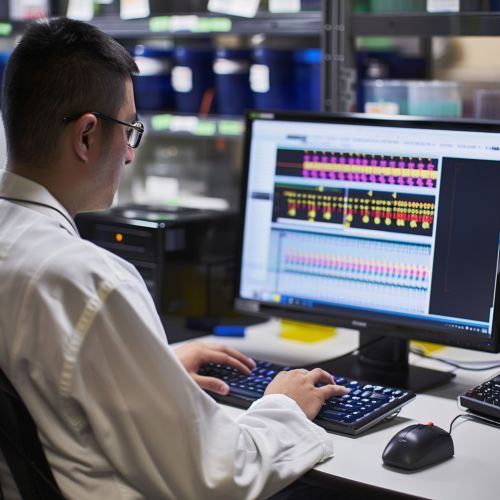Bioinformatics in microbiology
Introduction
Bioinformatics is a field that combines biology, data science, and computer science to analyze and interpret biological data. In the context of microbiology, bioinformatics tools are used to analyze microbial genomes, understand microbial diversity and evolution, and predict protein function among other applications. This article delves into the role and applications of bioinformatics in microbiology.
Role of Bioinformatics in Microbiology
Bioinformatics plays a crucial role in microbiology, especially in the era of high-throughput sequencing technologies. It provides tools and methodologies to handle, analyze, and interpret the vast amount of data generated by these technologies. This has revolutionized the field of microbiology, enabling researchers to study microbes at a genomic level and understand their diversity, evolution, and functional capabilities.


Applications of Bioinformatics in Microbiology
Bioinformatics has numerous applications in microbiology, ranging from microbial genome analysis to metagenomics and microbial ecology.
Microbial Genome Analysis
Bioinformatics tools are extensively used in microbial genome analysis. They help in genome sequencing, annotation, and comparative genomics. Genome sequencing involves determining the complete DNA sequence of an organism's genome. Once the genome is sequenced, bioinformatics tools are used for genome annotation, which involves identifying the locations of genes and all of the coding regions in the genome, and determining what those genes do.
Metagenomics
Metagenomics is the study of genetic material recovered directly from environmental samples. Bioinformatics tools are used to analyze metagenomic data and provide insights into the microbial communities present in different environments. This helps in understanding the diversity and function of microbial communities in various ecosystems.
Microbial Ecology
Bioinformatics tools are also used in microbial ecology to study the interactions of microbes with their environment and other organisms. This involves analyzing microbial community structure, diversity, and function using sequence data.
Challenges and Future Directions
Despite the numerous applications of bioinformatics in microbiology, there are several challenges that need to be addressed. These include the need for more efficient algorithms to handle the increasing amount of data, the need for better integration of different types of data, and the need for improved tools for data visualization and interpretation. Looking forward, the field of bioinformatics in microbiology is expected to continue to grow and evolve, driven by advances in sequencing technologies and computational methods.
